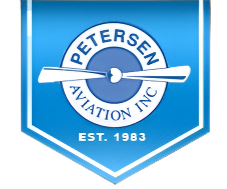Frequently Asked Questions
FAQ
Are fuel injected engines approved?
We do not have Auto Fuel STCs for engines using Bendix fuel injection because it failed our flight testing. Continental fuel injection did not have that problem and is therefore approved – I0-470-J or -K (225hp). The 260hp I0-470 and 285hp I0-520 are also approved. These last two require Anti Detonation Injection (ADI).
Why isn't the 0-320-H2AD engine approved?
This engine is slightly higher in compression than the other 160hp 0-320 models that were tested. Therefore a test program only applicable to the H model would be necessary. There are not enough of them to justify the cost of these tests.
Why isn't the Mooney M-20-C or Piper Comanche approved?
The Mooney and Comanche both experienced vapor lock problems when they were tested. We solved the vapor lock problem but could not overcome pneumatic lock. Pneumatic lock takes place when the fuel boils as it enters the carburetor. The engine then dies due to an over rich mixture. This is just the opposite of a vapor lock where the engine quits or runs poorly due to a lean mixture. The better an airplane performs, the more difficult it is to get it through the flight test program.
Is the Cessna 337 approved?
The airframe and Continental I0-360 engines used in the 337 have not been tested and are not approved.
Are 180hp Cessna 172 conversions approved?
Conversions to the 180hp 0-360 engine in the Cessna 172 are approved only on those C-172's that retain a fully gravity fed fuel system. Avcon conversions use a fuel pump, they failed our flight testing and are therefore not approved. The AirPlains conversion does not use a fuel pump and is fully approved.
If the Apache with 150 or 160 hp engines is approved, why isn't the Apache with the 0-540 235 hp "B" model engines approved?
The 235 Apache failed the flight test due to vapor lock. At that time, if an airframe failed the flight test, it was washed out, and we went on to the next airplane. There are numerous examples of airframe and engine combinations which would appear to be approved since they have STCs individually but may not be approved in conjunction with each other, either because they failed the flight test or were never tested.
Collapsible rowAre the old Ballanca's with the Franklin engine approved?
No, they have never been flight tested.
Since the 0-360, Cheetah, and Traveler are approved, why isn't the Grumman Tiger?
The Tiger was never flight tested. The approvals from the Cheetah and Traveler cannot be extended to the Tiger because the fuel flow on the 0-360 is a little higher than on the 150hp and 160hp 0-320's. Hence a flight test program for the Tiger would be necessary.
Since the Cardinal 150hp 0-320 is approved, why isn't the 180hp 0-360 powered Cardinal?
For the same reason listed above for the Tiger. We never flight tested a Cardinal with the 0-360 engine.
Do I have to change pistons in the C-152 to burn auto fuel?
No, not with a Petersen STC. The EAA offers an STC for 87 octane mogas which requires a piston change. Our STC for the 0-235 L2C does not alter the engine, but it requires the use of 91 octane fuel as opposed to 87 octane.
Will valves tolerate a diet of 100% unleaded fuel?
Following the lead phase out rules imposed since the 1980’s it is no longer possible to obtain leaded automotive gasoline in the United States. 100LL is now the only source of lead that remains available. There are no additives available that contain lead.
When you overhaul your engine use 100LL aviation gasoline until the warranty expires. If there is no warranty, use 100LL for the first 30 hours to insure adequate lead during the break-in period.
Radials, Franklins, and Continental engines from the A-65 thru the 0-300 should have lead provided constantly. A mixture of 30% 100LL and 70% unleaded gasoline yields a lead content equivalent to leaded 80/87 octane aviation gasoline. This is enough lead to protect valve seats but not enough to foul the plugs.
If a Lycoming engine has been overhauled with factory parts since 2000, then it should have hardened parts requiring no lead.
It is critical as these engines are overhauled that the cylinder assemblies be replaced with parts coming straight from the manufacturer specifically made to tolerate unleaded avgas. As far as the engine is concerned, whether the fuel is mogas or avgas doesn't make any difference. If it's unleaded, it's unleaded, regardless of the name on the pump. Inquiries need to be made directly to Lycoming and Continental for parts compatible with a steady diet of 100% unleaded fuel.
Will radial engines tolerate 100% unleaded fuel?
Perhaps, but their TBO may be significantly reduced from what we have become accustomed. Our standard recommendation for any radial is to burn a mixture of 75% unleaded mogas and 25% 100LL. This gives a lead content roughly equal to leaded 80/87 octane avgas. Any more than this is overkill. We are not aware of a source of hardened valves, guides, and seats for radial engines.
What about a fuel additive to replace lead?
There are no fuel additives which will protect valves and seats in the same way that lead does. Studies done in 1988 by the EPA showed virtually all of the additives tested to be worthless. Others have hit the market since then, but we have not seen any data which supports the claims made by those who market these additives.
Are STCs transferable from one airplane to another?
No.
